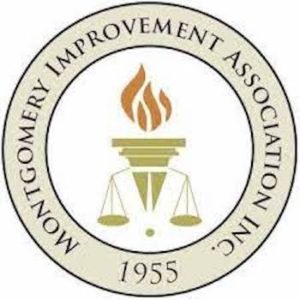
*The Montgomery Improvement Association (MIA) was formed on this date in 1955. This organization of Black ministers and community leaders focused national attention on racial segregation in the South.
Under the leadership of Ralph Abernathy, Martin Luther King Jr., Rufus Lewis, and Edgar Nixon, the MIA was instrumental in guiding the Montgomery bus boycott. Jo Ann Robinson of the Women's Political Council and Nixon of the National Association for the Advancement of Colored People (NAACP) launched plans for a one-day boycott of Montgomery buses. Jo Ann Robinson said, "Regular bus routes had to be followed so workers who "walked along" the streets could be picked up.
This committee, headed by Alfonso Campbell and staffed by volunteer workers, worked all night Friday to complete this program phase. The pickup system was so effectively planned that many writers described it as comparable in precision to a military operation. The success of the boycott's first day and the excitement of the mass meeting on the evening of that day removed any doubt about the strong motivation to continue the boycott. On the afternoon of December 5, the black leadership established the Association. At a meeting that evening attended by several thousand community members, the MIA was established to oversee the continuation and maintenance of the boycott. King, a young minister new to Montgomery, was elected its chairman president.
Rosa Parks said, "Dr. King was chosen partly because he was relatively new to the community, and so did not have any enemies." The organization's overall mission extended beyond the boycott campaign, as it sought to "improve the general status of Montgomery, to improve race relations, and to uplift the general tenor of the community." After the MIA's initial meeting, the executive committee drafted the boycott's demand and agreed that the campaign would continue until the demands were met. Their demands included courteous treatment by bus operators, first-come, first-served seating, and employment of African American bus drivers.
Thus, despite the Supreme Court's decision in Brown v. Board of Education, the MIA was initially willing to accept a compromise consistent with separate but equal rather than complete integration. In this respect, it followed the pattern of earlier boycott campaigns in the Deep South during the 1950s. A prime example was the successful boycott of service stations in Mississippi for refusing to provide black restrooms. The organizer of that campaign, T.R.M. Howard of the Regional Council of Negro Leadership had spoken in Montgomery at the Dexter Avenue Baptist Church only days before Parks’ arrest.
Over the next year, the MIA organized carpools and held weekly gatherings with sermons and music to keep the black community mobilized. During this time, officers of the organization negotiated with Montgomery city leaders and coordinated legal challenges with the NAACP to the city's bus segregation ordinance. They supported the boycott financially, raising money by 'passing the plate' at meetings and soliciting support from northern and southern civil rights organizations.
Following its success in Montgomery, the MIA became one of the founding organizations of the Southern Christian Leadership Conference (SCLC) in January 1957. The MIA lost some vital momentum after King moved from Montgomery to Atlanta in 1960; the organization continued campaigns throughout the 1960s, focusing on voter suppression, local school integration, and the integration of Montgomery city parks. Although it lost momentum, it did improve the lives of Black people living in Montgomery after the boycott.